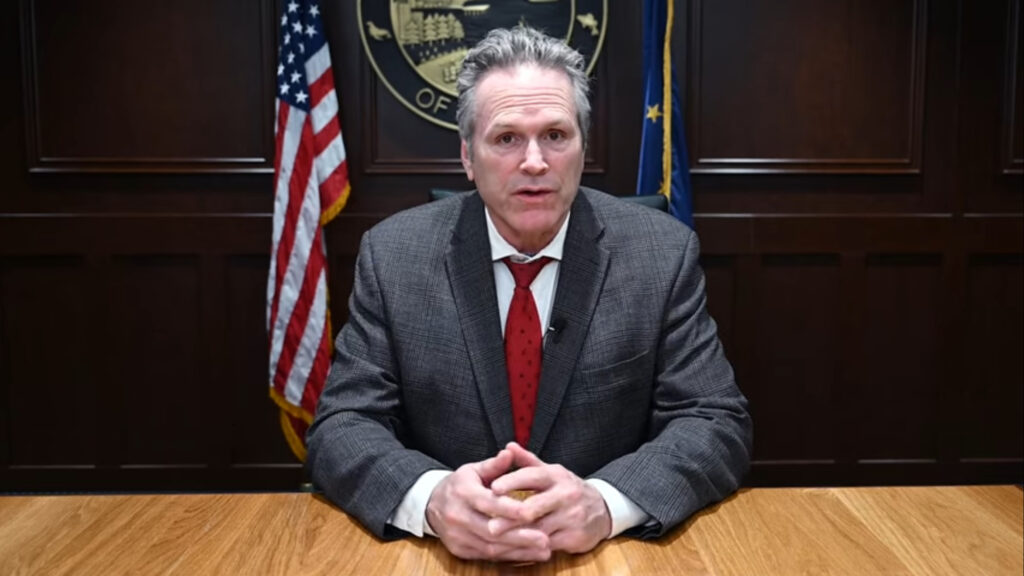JUNEAU — Gov. Mike Dunleavy on Wednesday carved $122 million from the state operating and capital budgets before signing Alaska’s $14.7 billion Fiscal Year 2026 spending plan. Nearly half of the reductions fall on public K-12 schools, and districts must now revise budgets before the new fiscal year begins in July.
The governor’s office said the vetoes mirror a fresh Department of Revenue forecast showing general-fund income could come in $222 million below the estimate lawmakers used this spring. The department now assumes oil will average about $68 a barrel next year, down sharply from March expectations.
In a video posted to social media, Dunleavy linked the cuts to that oil slide: “The oil situation has deteriorated. The price of oil has gone down, therefore our revenue is going down, and basically we don’t have enough money to pay for all of our obligations.”
The single largest veto trims $50.6 million from the foundation formula — the equivalent of $200 per student — erasing almost one-third of the permanent $700 per-pupil boost the Legislature approved last month after a bipartisan override of an earlier Dunleavy veto. The governor also eliminated:
- $25.1 million set aside for major school maintenance
- $5.7 million for infant learning and early-intervention services
- $490,000 for teacher-recruitment programs
- $554,000 in bonuses for National Board-certified teachers
Because the base-student allocation is written into statute, cutting dollars out of the appropriation effectively lowers what districts receive this year even though the formula remains on the books.
On the Kenai Peninsula, Superintendent Clayton Holland said his district had already budgeted for last year’s $680 one-time boost to continue. “We’ve been trimming for years … this will be devastating to our communities,” he said, adding that more layoffs and larger class sizes now appear likely.
Overriding a budget veto takes a three-quarters vote–45 of the Legislature’s 60 members–and Senate President Gary Stevens, R-Kodiak, indicated the numbers aren’t there. “We planned for this in the budget and had the funds to afford a $700 increase,” Stevens said, calling the governor’s move “disappointing.”
School boards must adopt final budgets by July 15; many will now reopen spending plans.
The Legislative Budget & Audit Committee will review vetoes at its next meeting, but cannot reverse them. Lawmakers could call a brief special session to attempt an override, though Stevens said that is unlikely.
Dunleavy hinted additional policy bills tied to student outcomes may surface later this summer.
For now, district leaders say they are bracing for larger class sizes, trimmed programs and fresh conversations with local taxpayers who may be asked to pick up costs the state has shed.

